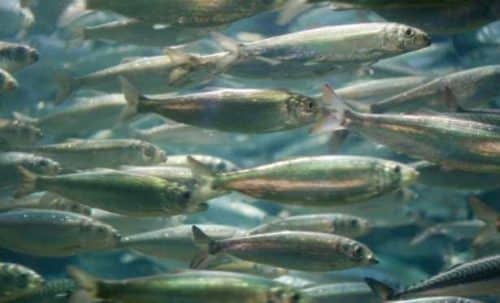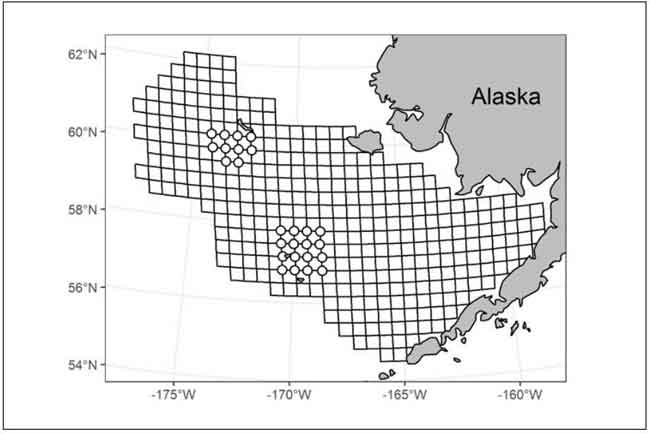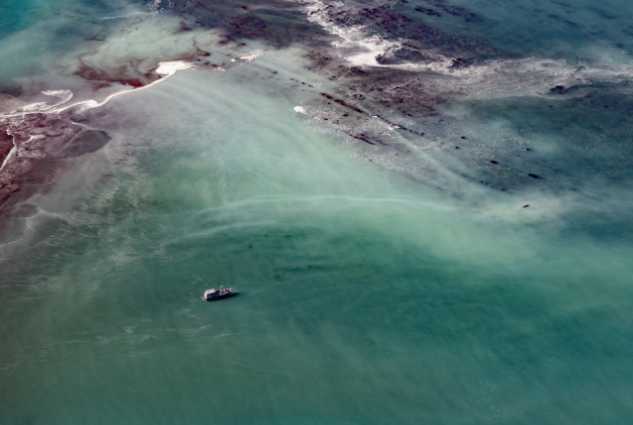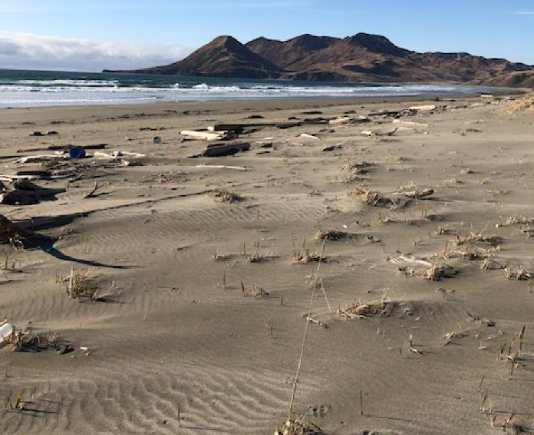Iqalluarpat amlertut kiagpak. – Herring are plentiful this summer.
Pacific herring (Clupea pallasi) are small marine fish that inhabit the near shore and continental shelf waters of the Gulf of Alaska. They spawn in at least thirty-five bays around Kodiak, with concentrations in Marmot Bay, Chiniak Bay, Sitkalidak Strait, and the fjords of western Kodiak. Each spring, herring mass in shallow waters to spawn. They prefer protected rocky coasts with dense bottom vegetation, where their sticky roe clings to eelgrass, rockweed, kelp, and even boulders. There are some traditionally used spawning sites, but spawning locales vary from year to year in many regions. Wherever they spawn, herring are highly visible. Their milt turns coastal waters milky and attracts the birds and sea mammals that feed on their roe.
Although adult herring are a potential source of food, today Alutiiq people primarily harvest herring roe. Subsistence fishing begins in May, during peak spawning, and tapers off by July as the fish move offshore to feed. Alutiiq families collect the spawn stuck to seaweed, which they boil for just a moment. Elders flavor this dish with seal oil.
Herring remains are notably rare in Alutiiq archaeological sites. This does not mean that ancestral people ignored this plentiful resource. Archaeological sites full of stone net sinkers occur in many coastal sites well situated for herring fishing. Perhaps Alutiiq ancestors harvested herring or herring roe with these nets. The soft roe would not leave any traces for archaeologists to find.
Source: Alutiiq Museum









